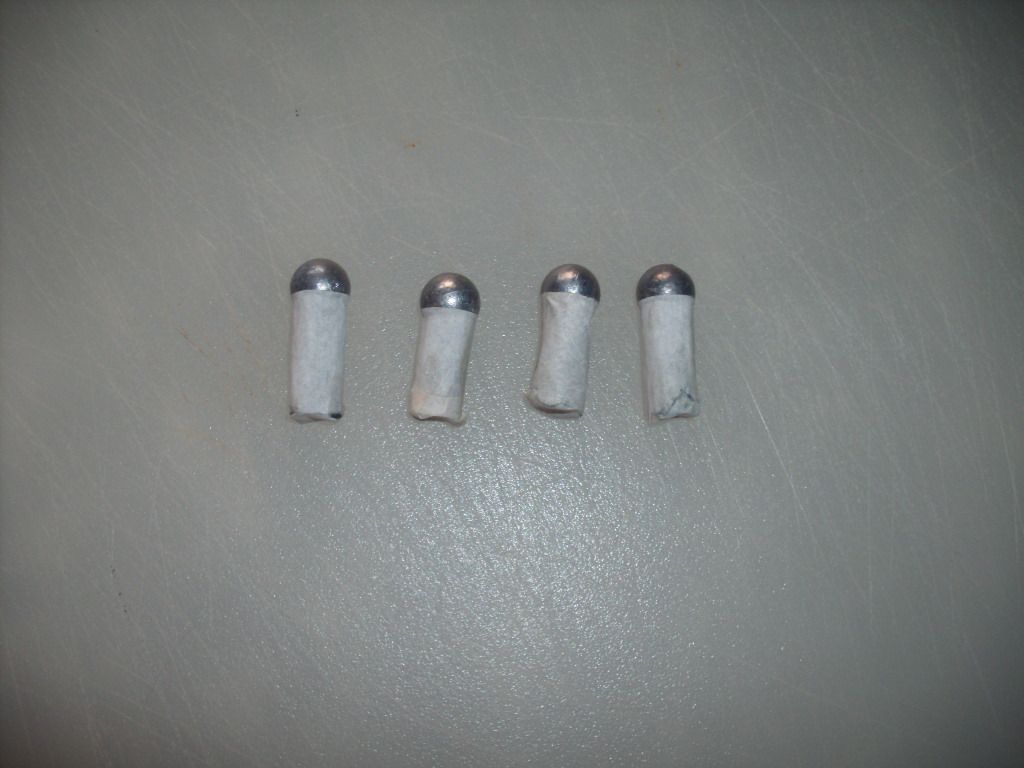From a historical standpoint I'll add some things.
Colt first tried to get some combustible cartridges going in the late 1830's while still in Patterson, NJ and these were for his revolving rifles, not pistols. This type of ammunition was used for all sorts of percussion firearms and it was made by a variety of U.S. and European makers. Colt really got underway about 1855 and used German tin foil until 1858 and then switched from the tin foil to paper soaked in nitrates and sulpheric acid- so that it would burn up. Dewitt Sage made millions of similar rounds during the Civil war but used a skin (actual intestine) sack or case that theoretically would "Crisp" and get blown out the barrel but the Sage cartridges had more residue and after about 40 rounds the residue was so much that another round could not be loaded fully into the chamber.
There was a lot of variation with this type of ammunition but I'd say the Navy rounds held about 15 gr of fffg and the Army about 17 gr. Why the moderate powder charges?? On the navy the lengths of the cylinders on the Colt, Remington, and Whitney revolvers varied, the Whitney being the shortest and the ammunition had to be suitable for any of the three. The moderate charges also made for a shorter cartridge so that it could still be loaded even with some fouling in the chambers.There was other ammunition made for both the Savage and Starr revolvers as well as the Sharps rifles/carbines and other Civil War period arms.
I think Sage used a mold to form his gut cases and from my research they were not treated with any nitrates. Colt used paper after 1858 and since the paper was not water proof Colt had the wood boxes (about the size of a deck of cards) wrapped in paper and shellaced to make them water proof. Colt used little wood dowels that were tapered to form the paper sacks/cases and the sides of the paper were overlapped and sealed with water proof glue.
Balls and conicals were loaded but the balls were very early and not common. Bullet shapes varied but the final shape had a rebated heel at the base. Some had grease grooves. There was variation between manufacturers.
The tin foil was very good and Colt found that the only tin that really worked well was from Germany (Prussia). Apparently it disintegrated from the exposion and the fouling was minimum. The tin foil was waterproof so these cartridges didn't need the wood boxes and they were normally sold 10 or 12 to a "packet" which was a soft paper/cardboard type envelope. The Sage skin cases were also very water proof, one military test soaked them for 4 hours, and they all still fired. Incidentally, with all combustible ammunition it was not required to break the case to expose the powder, the blast of the percussion cap was supposed to be strong enough to rupture the case and explode the contents. On a modern combustible- if you are having a time lag there is too much paper at the back of the case or residue is blocking the path of the percussion cap.
I experimented with very thin foil from candy wrappers and the straight line blast of the percussion cap gives 100% ignition. The foil wouldn't hold an ember and it really isn't a bad choice except the residue is excessive and after only 3 or 4 rounds I couldn't get another cartridge fully seated in the chamber. The Colt foil was much better.
I use cigarette paper BUT with the knowledge this paper doesn't have the Colt type treatment and doesn't disintegrate upon explosion. The big deal here is residue that can hold an ember. That's why the paper was treated whereas the skin only "crisped" and the tin foil needed no treatment.
In any event, I'll make combustibles for the range but for the field the better solution is to make 12 little paper tubes and paper caps (an empty pistol case and cork stop would also work) A powder charge goes into each. These along with wads, bullets and caps all can fit nicely in an altoids can and you have plenty of ammunition for carrying in the field. You take the top off each tube and pour in the charge (keep the tubes and reuse them), then the wad and the ball and cap.
Finally, the whole area of combustible ammunition is a part of fire arm collecting and quite a few books have been written on the subject. Some collectors are interested in the variation on labels, etc, In any event it is a well researched area and much is known. I don't know if anyone ever figured out a grand total made during the Civil war. Colt made about 5 million and so did Sage. There were a lot of other manufacturers as well and of course that is only what the North used. The Richmond arsenal made them as well- I might guess about 20 million total but that's just a guess. There weren't many made after the war but there must have been an emorous surplus available. I think I read that Abilene, KS told Hickok they would pay for his practice ammunition and he shot about 6,000 cartridges. The city fathers weren't happy with the bill.







